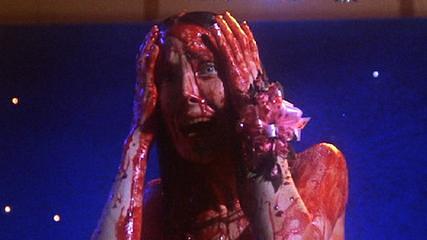How To Create A Captivating Scene

I will teach you how to create a captivating scene for your script by following ten steps.
The more you know about scriptwriting, the easier it is to break a screenplay down. A full screenplay breaks down into three acts. Those acts break down into sequences, sequences into scenes and scenes into moments.
A scene consists of camera placement (INTERIOR or EXTERIOR), location and time of day. When anyone one of those three elements change then the scene changes too. A scene is a dramatic unit and should be treated as such, that means that something has to happen in each scene to create some drama.
Here are the ten steps to follow to learn how to create a captivating scene.
1. Every scene should have a purpose and move the story forward.
You should be looking to achieve something with every scene. Whether it be to setup a stumbling block for later on or introducing a new character you should look at every scene you write and think “what’s the purpose?”.
Every scene should also move the story forward in terms of both the plot and character. In a good screenplay you will notice that each scene connects and develops to the last scene, while leaving a thread or two for the following scenes to pick up.
You should also look to have your main character involved in every scene in some way. By making sure your main character is involved there’s a good chance the scene will move the script forward in some way. Every scene in your screenplay should work the story into the frenzied final showdown.
Look at the scene you’re writing and ask yourself:
- What is the purpose of this scene?
- Why do I need this scene?
- Does this scene reveal anything new about a character or the story?
- What is the payoff?
2. Don’t tell when you can show.
When you write your screenplay remember that movies are a visual medium, so be as visual as possible. Don’t have two characters discuss something they did recently, if it’s backstory that’s important enough to bring up directly then it’s important enough to show.
There are times when it is more appropriate to tell. If you’re reaching the climax of an action packed scene then telling the reader makes events seem more sudden and gives them an instant impact.
3. Walk and talk.
Avoid having two characters just idly chatting while nothing happens. Wherever you have dialogue the characters should also be thrust into action. Even if they’re just walking towards where the next scene is happening. You only have 90 to 120 minutes to tell your story, during which you need to keep the audience’s attention. Don’t let your story lull by having 5 minutes of expositional dialogue with no action.
4. A scene should have a beginning, middle and end.
A good scene should stand alone as a dramatic using while tying into the previous scene and leading to the next. Think of each scene you write as a mini screenplay. Have a character with a goal, setback and some sort of conclusion while leaving a loose end for the next scene to take up.
5. Cut the crap.
Don’t have dialogue just for the sake of dialogue and don’t have any unnecessary action scenes. A screenplay is a potentially real life situation condensed into a short period of time with all the dull parts cut out.
The best way to achieve this is to start each scene as close to the end as possible. If you have a character leaving work, driving home and walking into his home only to find that his house is being burgled then you’re showing too much. You create a lot more impact by cutting the first two parts and just having the character walking into his house and being confronted by the burglar(s).
6. Pace your scenes.
While I studied scriptwriting (a process which is never ending) I was given a piece of advice which stuck with me.
“Never blow the world up in the beginning of the scene or you’ll have nowhere to go.”
While it’s perfectly acceptable and even advisable to start a scene with a big event to grip the reader/viewer you want to save the biggest and best ‘til last. The pace of a scene should also fluctuate depending on its position in the story. The closer to the story climax the quicker the pace should be. Keep throwing obstacle after obstacle at your main character.
7. Finish the scene dramatically.
When you reach the end of the scene you should always aim to leave the main character with some sort of decision or imminent decision. Make the viewer lust after the knowledge of what is going to happen next. Throw them a cliff-hanger, a reversal or a revelation to raise their interest level. This is how you add the twists and turns in a story that make it captivating.

8. Transition smoothly between scenes.
Here I’m not talking about adding cuts, dissolves and other editing techniques to your script, that’s the job of the director. Perhaps the best way of creating a smooth transition between scenes is to finish on a certain image and then start the new scene with a similar image. For example, you could end one scene with the image of a clock at one location and begin the next scene with the image of a clock at the next location. This example would also help the audience understand any passage of time that has lapsed.
You don’t have to shoe horn in a transition between every scene but if they come naturally, by all means add them. A good transition allows the story to flow smoothly and can add a certain level of cohesion.
9. Define an emotion or mood.
In a screenplay every main character should have some sort of ultimate goal. Each scene should work towards that character achieving their goal in baby steps. That means that every scene should contain some sort of action in which the character attempts to achieve their goal. Sometimes the attempt will fail or not work as planned, leaving your character frustrated and angry. Other times they will succeed and be driven on to push towards their goal even harder.
Humans are emotional creatures so treat your characters as such.
10. Have a motivated conflict.
No matter how big or small it is conflict which drives a story forward. Even small, less exciting, scenes should contain some level of conflict. Even the best of friends have small disagreements and you’ll find that even when two people have the same goal in mind they both have different ways to go about achieving it. In contrast the conflict between two enemies will be much greater, with both characters willing to do anything to defeat the other.
If you follow the ten steps above I am confident that even a beginning scriptwriter can create a truly memorable scene. Try keeping this article open on your monitor as you write a scene and keep referring back to make sure you’re on course.
If you need any more help on how to create a captivating scene, check this out…
Please CLICK HERE To Check Out My Top 5 Online Scriptwriting Courses



When I used to do coverage for scrtpis I saw this kind of thing ALL the time.And even more heinous stuff…I once saw a script that had so much camera direction in it that–if you took it all out–the script would have been about 25 pages long. I’m not exaggerating.